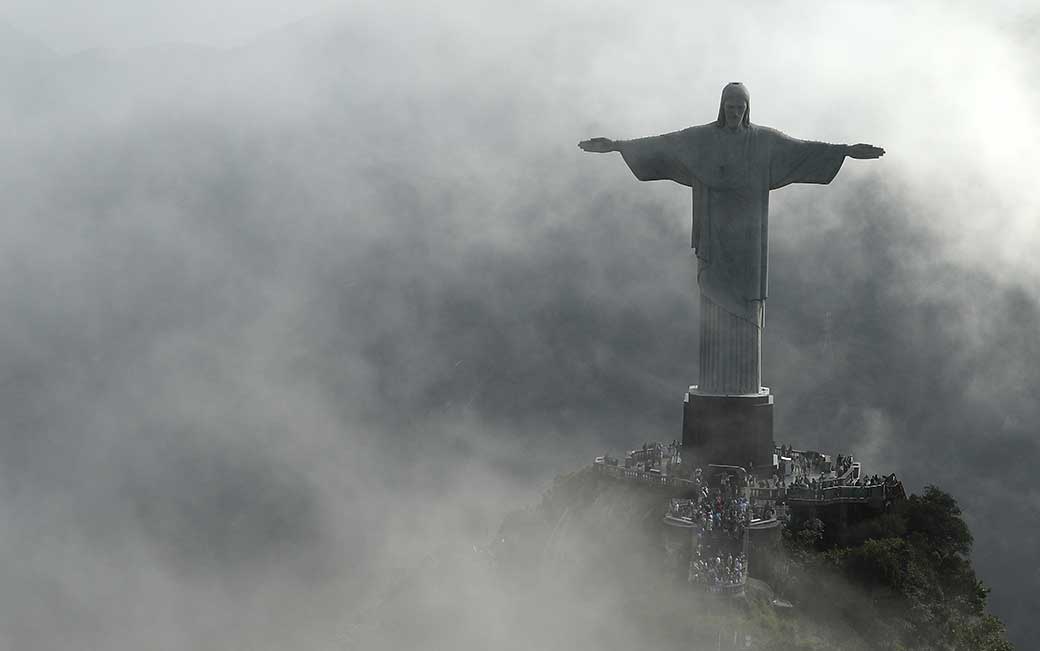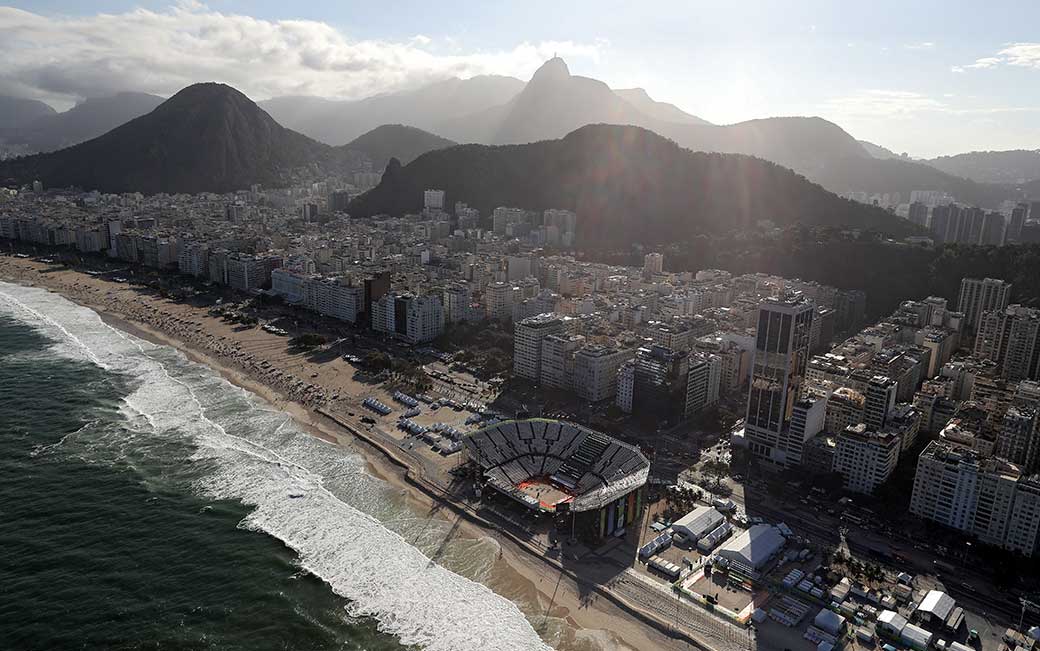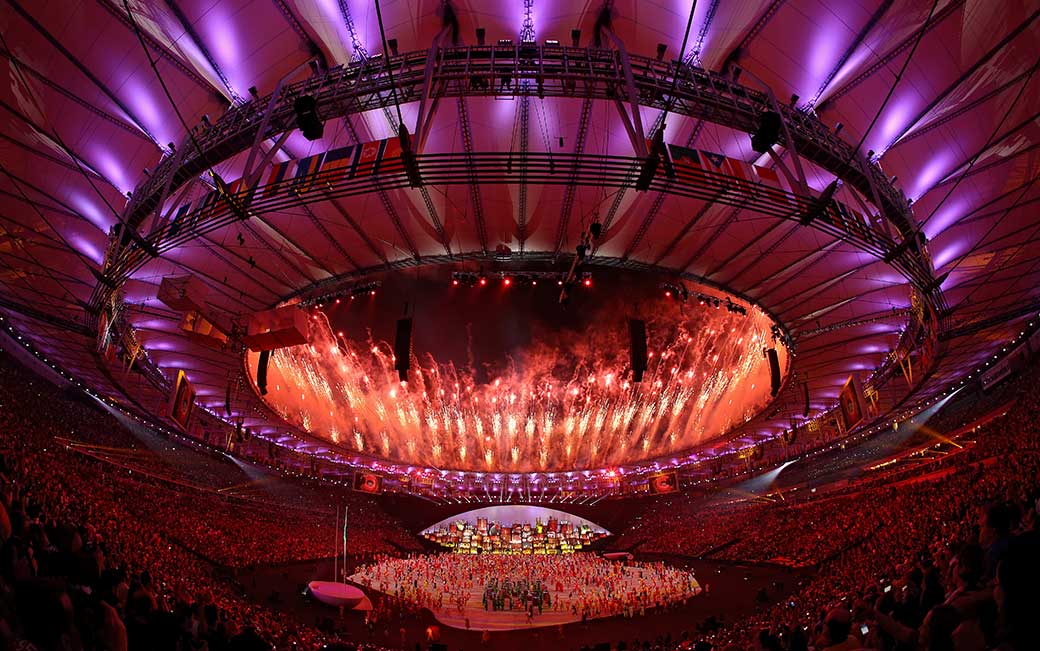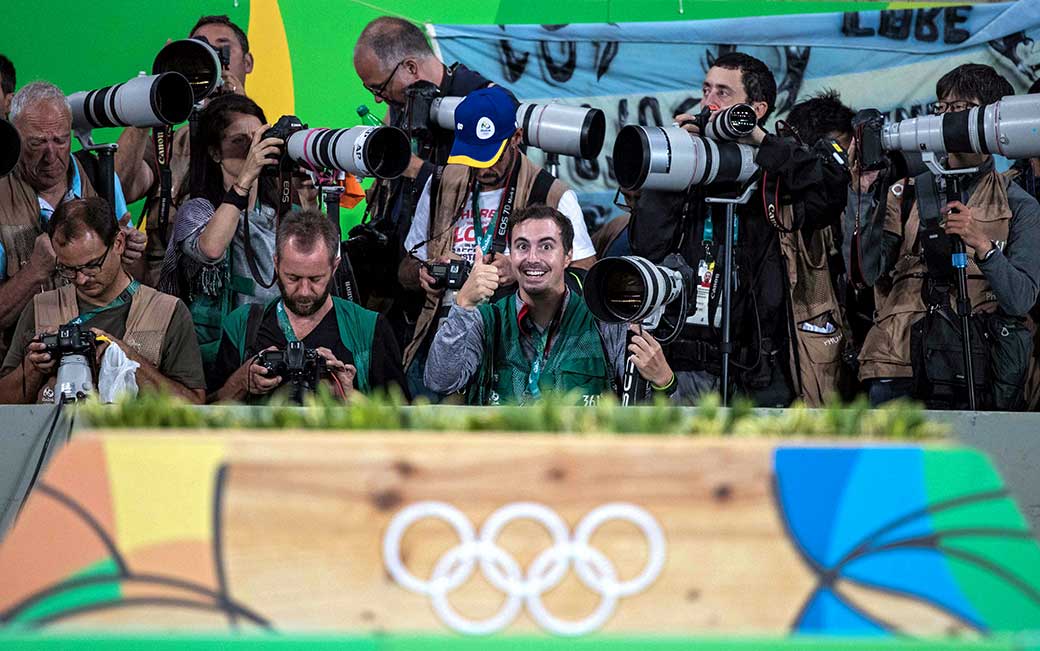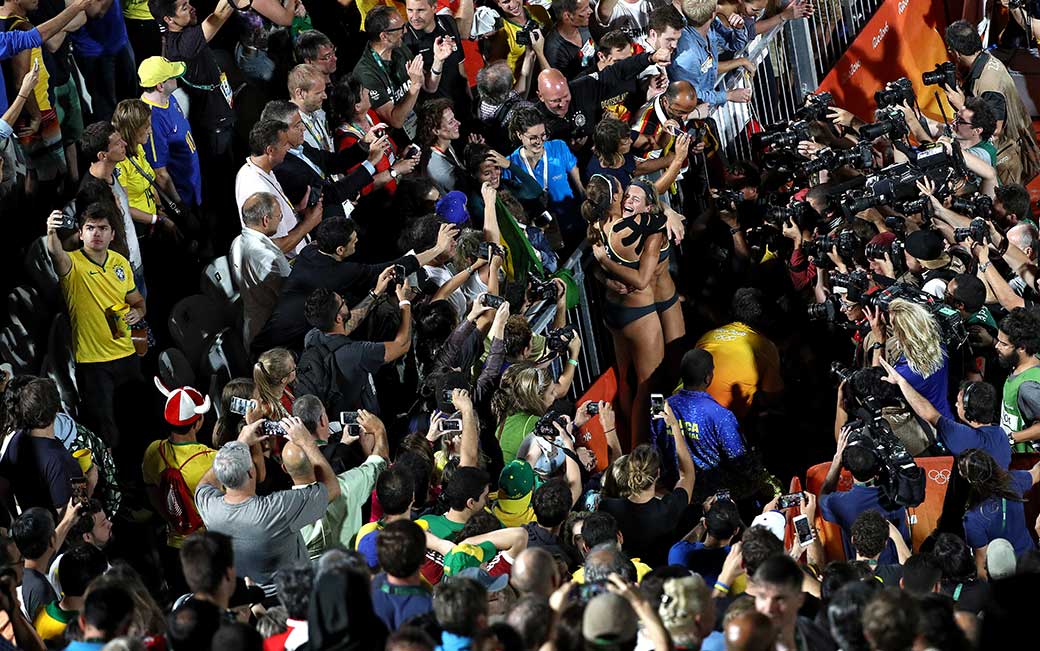
TU alums take their best shots in Rio
Patrick Smith '09 and Matthew Hazlett '14 lived a "dream-come-true" assignment at the Rio Olympics
By Daryl Lee Hale on March 3, 2017
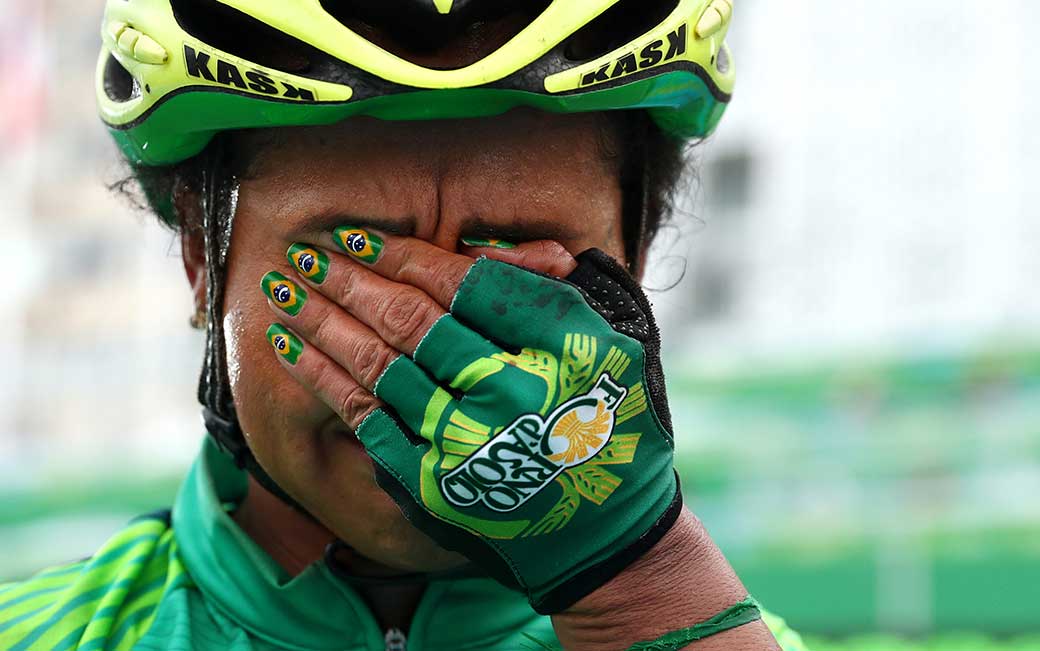
The Olympic Aquatic Center was always loud, filled with shouting. Lots of shouting. Even after U.S. swimmer Michael Phelps won gold, the noise didn’t subside.
Matthew Hazlett ’14 worked through it. He sat in the stands, editing photographs of Phelp’s victory on his laptop. If anything, the energy surrounding him made the deadlines more pressing.
In the Olympic Stadium, as Usain Bolt prepped to run the 100-meter semi-final, the crowd was silent. But when the Jamaican thunderbolt crossed the finish line, victorious, the fans erupted into cheers.
Patrick Smith ’09 worked through it, watching history in the making from behind a camera lens.
Hazlett and Smith worked on the Getty Images team for the 2016 Summer Olympic Games in Rio de Janeiro, Brazil—Hazlett as a photo editor and Smith as a photographer.
For both, it was their first time covering the Olympics.
“Combatting the energy of the stadium with staying focused on delivering the product quickly was difficult at first,” Hazlett recalls. An editor’s duties include cropping, color correcting and captioning photos, in addition to shooting press conferences.
It wasn’t long before he got the hang of it. The team worked 16- to 17-hour days, covering sports from basketball and gymnastics to more obscure events like women’s air rifle and table tennis.
The long days paid off. One of Hazlett’s photos appeared on what seemed like every website homepage and Facebook news feed when U.S. swimmer Ryan Lochte made headlines for his controversial behavior in Rio.
“It was cool to see an image that I took have that much circulation,” Hazlett says, despite being critical of his photo. (It’s boring, he declares. “[Lochte’s] just sitting at a table.”)
The 28 days Hazlett spent in Rio held many firsts for the freelance photographer. It was his first time out of North America—an interesting experience in a location that drew controversy before the Olympics even began.
There are huge class differences in Brazil, which meant “you would see parts of Rio that looked like you could be in the middle of any major United States city and other parts where it was nothing like I’d ever seen before,” he explains. Passing by the favelas, urban slums of Rio, offered a stark contrast to the tourist areas that the photography team visited, such as the beaches of Copa, the Christ the Redeemer statue and Sugarloaf Mountain.
Both Hazlett and Smith felt safe, and separate, from any threats.
“Anytime you needed anything, everyone was willing to help,” Hazlett says. “It’s a very welcoming country.”
Those working the Olympics even had their own lane on the highways to expedite travel and prevent danger posed by thieves approaching taxi cabs—an all-too-real threat in Rio.
And having “street smarts” from living in Baltimore helped, Smith quips.
For Hazlett, the Olympics also presented his first time covering such a wide array of sports and his first time working with so many world-class photographers from around the globe.
“[Photographers] all see things in a unique way,” Hazlett, 24, explains. “Being young and new to the field, a lot of the photographers I worked with, I’d never even met before.”
It was a special comfort, then, when his schedule lined up with Smith’s.
The two collaborated one-on-one for beach volleyball, an event that entailed long days because the final match often began at 11:30 p.m.
“ The competition is as rigorous among the photographers as it is for the athletes. ”
Editing Smith’s pictures made the day more bearable. The duo had worked together on a weekly basis back in the States.
“I knew the images he shot and what he was looking for,” Hazlett explains. “And [Smith] is just a great shooter, so that made it easy to edit his pictures.”
A seasoned, award-winning staff photographer for Getty Images, Smith has covered events around the globe, winning numerous accolades, including a first-place from The White House News Photographers Association in 2016. Still, the Olympic Games are a class all their own, Smith says.
“You hope that you can cover one, if not as many as you possibly can, during your career,” he explains.
The competition is as rigorous among the photographers as it is the athletes, Smith says.
“We all want to have the big moment for ourselves,” he notes.
And while he feels he did not walk away with the definitive image of the 2016 Olympics (that honor, he believes, belongs to Getty photographer Cameron Spencer’s viral image of Jamaican sprinter Usain Bolt), bearing witness to such monumental moments made the experience a success. One event he especially recalls is Bolt’s gold medal ceremony.
“I was covering what could possibly be [Bolt’s] last-ever medal ceremony, kissing the last gold medal that he may ever win if he doesn’t compete again,” Smith explains. “As a photographer, sometimes specific moments triumph a graphic picture. Just documenting that moment is special.”
So is having a fellow Towson U and Towerlight alum by his side, he says.
“It was cool to know that [Hazlett and I] were on similar paths in college and here we are working one of the largest sporting events in the world together,” Smith says. “It was pretty incredible.”
Darryl Lee Hale ’16, a former editorial assistant for the magazine, is the educational and social media outreach director of the American Breast Cancer Foundation.
